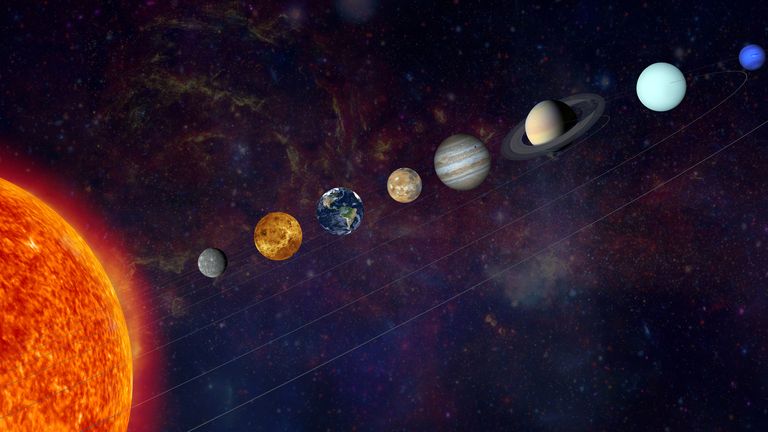Mercury, Mars, Jupiter, Saturn, Neptune and Uranus are aligning overnight on 3 June – but if you want to see it, you will need stargazing equipment.
The planets will line up in a diagonal arrangement across the sky. Saturn will appear at the top, followed by Neptune, then Mars, Uranus and Mercury, with Jupiter appearing closest to the horizon.
However, some of the planets will be easier to spot than others.
“Try looking east-southeast around an hour before sunrise at a location with a very low horizon,” says Gregory Brown, astronomer at Royal Observatory Greenwich.
“Mars and Saturn will be visible by eye, Mars with a distinctly orange tint to it, while Neptune will only be visible through a pair of binoculars or a telescope if you are lucky,” said Mr Brown.
Jupiter, Venus and Uranus may be more difficult to see as they are very close to the sun, meaning they are trickier to spot in the morning twilight.
“Even under ideal conditions, a dark sky, free from light pollution, Uranus is very dim and challenging to spot,” said NASA-JPL science communicator Ian O’Neill.
“The skyglow near dawn makes matters worse. Neptune is more than six times dimmer than Uranus, so [it] always requires a telescope to see.”
If you are going to spot the parade, head out around an hour before dawn. That would be around 3.30am in Land’s End and 2am in John O’Groats.
When stargazing, it’s best to head away from any sources of light pollution like street lights or houses, and bring a chair and warm clothes as you will need to let your eyes adjust fully.
“To explain why it is happening at all, it’s helpful to understand the structure of the solar system,” says Mr Brown.
“The [solar system’s] planets, including the Earth, all orbit the Sun in a remarkably thin disk-shaped region of space.”
That means that when the planets look close together in the sky, they appear in a “long trail of bright points in a roughly straight line”.
This line is what is described as a so-called “parade of planets”.
Although the parade should begin overnight into Monday, the planets will stay aligned for weeks.
“They can last quite a while, with the fastest movers, Venus and Mercury, staying within the pattern for a few weeks,” says Mr Brown, “And the slowest taking months or even years to leave formation.”
Although there’s a lot of excitement about 3 June, astronomers say there are more exciting displays coming soon that will actually be visible.
“A ‘planet parade’ this is not,” said Preston Dyches, a science communicator at NASA-JPL.
“The real planetary spectacle I would recommend checking out is on June 29, when you’ll be able to see Saturn, the third-quarter moon, Mars, and Jupiter.”



























